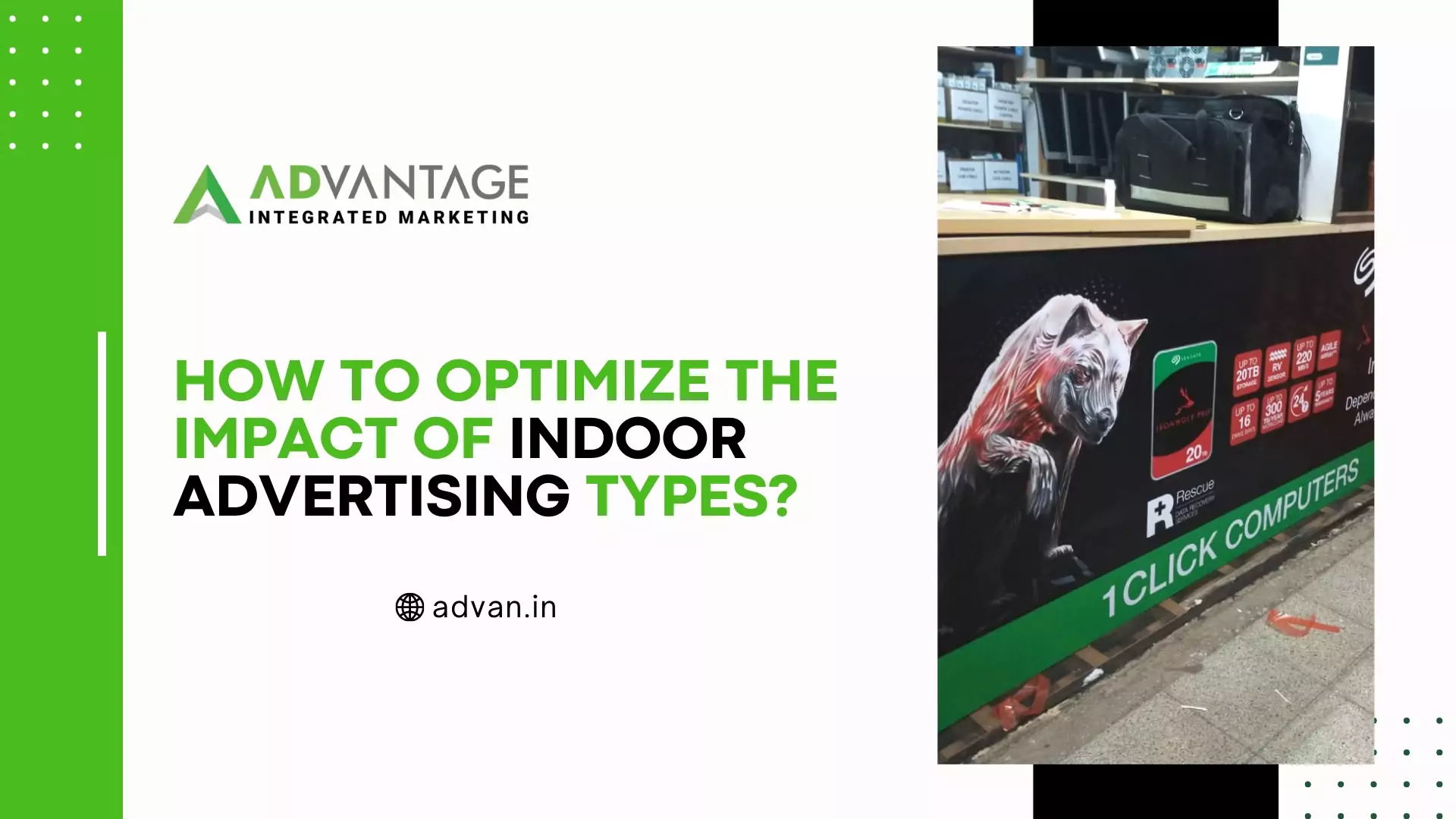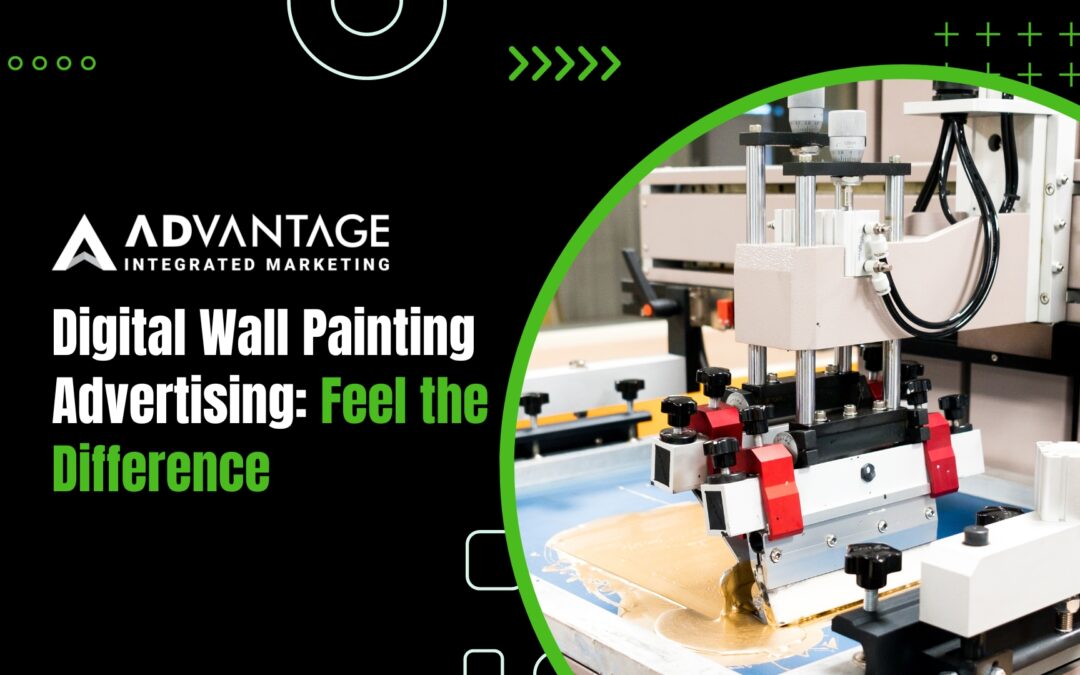Indoor advertising is a powerful tool for brands seeking to captivate their target audiences within various enclosed spaces. Indoor ads possess the unique ability to engage consumers in closed environments where they are already attentive and receptive. Undoubtedly, with strategic placement and compelling content, indoor advertisements can effectively enhance brand visibility, drive sales, and foster memorable brand experiences.
Sailing through this blog, you will explore the different factors to consider and utilize different indoor advertising types at its best. Looking for the best indoor advertising ideas for your business? Check out AD Vantage’s trending blog and grab the best.
Let’s have a glance on the different types of indoor advertising and itsadvantages.
What are the different types of indoor advertising?
Indoor ads holds a wide range of designs and types, each tailored to specific environments and audience demographics. Different types of indoor advertisements like digital displays, ranging from vibrant LED screens to interactive kiosks, offer dynamic content that can capture attention and deliver targeted messaging.
Static displays such as posters, banners, and floor graphics provide cost-effective options for conveying brand messages in high-traffic areas. Additionally, experiential marketing activations, such as pop-up shops and product demonstrations, create immersive brand experiences that leave a lasting impact on consumers.
What are the advantages of indoor advertising media?
There are different indoor advertising advantages that makes it stand out from other advertising tactics including outdoor advertising. Let’s check out the prime benefits of indoor advertising below.
- Highest and repeated visibility
- Less distraction
- High flexibility
- Engagement of targeted audience
- Cost effectiveness
- Measurable impact
- Highest impact
How to select different indoor advertising types?
When selecting indoor advertising types, several factors come into play to ensure optimal effectiveness. Understanding the audience demographics and foot traffic patterns within a particular location is essential for determining the most suitable advertising format.
Tailoring the size, placement, and content of ads to complement the environment and engage viewers is crucial for maximizing impact. Moreover, considering factors such as brand image, relevance, and regulatory requirements helps ensure that indoor advertisements resonate with the target audience and align with business objectives.
Let’s check out the prime factors to be considered while using indoor advertising method.
Understand the Audience
Understanding the demographics of the audience that frequents a particular location is fundamental to crafting effective indoor advertisements. For instance, if the location is a shopping mall, ads catering to family-oriented products or services would likely resonate well. On the other hand, if the location is a gym primarily visited by health-conscious individuals, advertisements promoting fitness gear, supplements, or wellness services would be more relevant. Tailoring advertising content to match the interests and needs of the audience ensures maximum engagement and effectiveness.
Consider Foot Traffic
Analyzing the flow of people within the space helps identify prime spots for advertising placement. High-traffic areas such as entranceways, waiting areas, or near amenities like restrooms and food courts are optimal locations for capturing the attention of passersby.
By strategically placing ads in these areas, businesses can maximize visibility and exposure to their target audience, increasing the likelihood of consumer interaction and conversion.
Size and Placement
Choosing the appropriate size and placement of ads is crucial for maximizing impact and visibility. Larger ads are suitable for expansive walls or atriums where they can command attention from a distance, while smaller ads may be more appropriate for corridors or near elevators where space is limited. Additionally, considering the visibility of ads from different vantage points within the location ensures that they reach the widest audience possible.
Interactive vs. Static
Deciding between interactive digital displays and static posters depends on the desired level of engagement and budget considerations. Interactive displays offer opportunities for immersive experiences and real-time interaction with consumers, making them ideal for capturing attention and fostering engagement. On the other hand, static posters are cost-effective and still effective in conveying messages, particularly in areas where prolonged engagement is not expected.
Relevance
Ensuring that advertising content is relevant to the location and its audience is essential for driving resonance and effectiveness. Ads promoting products or services that align with the interests and needs of the audience are more likely to capture attention and generate interest. Ads promoting healthy snacks would be well-received in a fitness center, while ads for gaming consoles might not resonate as much in the same environment.
Brand Image
Considering indoor advertising types reflect the brand image and is also vital for maintaining consistency and conveying the desired brand perception. High-end venues may call for sleek digital displays or upscale experiential activations to align with their premium image, while more casual spaces may warrant colorful posters or interactive installations that reflect a laid-back vibe.
Complement the Environment
Ensuring that advertising complements rather than clashes with the aesthetics of the location helps create a cohesive and harmonious environment. Choosing colours, fonts, and imagery that blend seamlessly with the surroundings enhances the overall ambiance and elevates the consumer experience.
Duration and Frequency
Determining the duration and frequency of ad displays depends on factors such as budget, campaign objectives, and the nature of the location. Some locations may offer long-term placements, allowing for consistent exposure over an extended period, while others may rotate ads more frequently to keep content fresh and engaging.
Measurement and Analytics
Considering how to measure the effectiveness of indoor advertising is crucial for evaluating ROI and optimizing future campaigns. Digital displays can provide metrics such as impressions, engagement, and dwell time, offering valuable insights into consumer behavior and campaign performance. Traditional methods, such as surveys or tracking coupon redemptions, may also be employed to gauge effectiveness, albeit with more manual effort.
Regulations and Permissions
Being aware of any regulations or permissions required for placing advertising in the chosen location is essential for avoiding legal issues and ensuring compliance. Some venues may have restrictions on the type or content of ads allowed, requiring businesses to adhere to guidelines or obtain approvals before deploying campaigns. By staying informed and adhering to regulations, businesses can mitigate risks and maintain positive relationships with venue owners and operators.
In a nutshell, indoor advertisements hold immense potential for businesses seeking to elevate their brand presence and drive consumer engagement. By strategically leveraging various formats and considering the unique characteristics of different indoor environments, businesses can effectively reach their target audiences and cultivate meaningful connections.
Whether through captivating digital displays or immersive experiential activations, indoor ads have the power to escalate brand visibility, stimulate consumer interest, and ultimately propel business growth in today’s competitive marketplace. Seek the expert guidance for an indoor advertising agency like AD Vantage in planning and execution of outstanding indoor ad designs. Visually stunning and creative indoor advertising types can create magic for your business with strong brand recall and recognition.









0 Comments